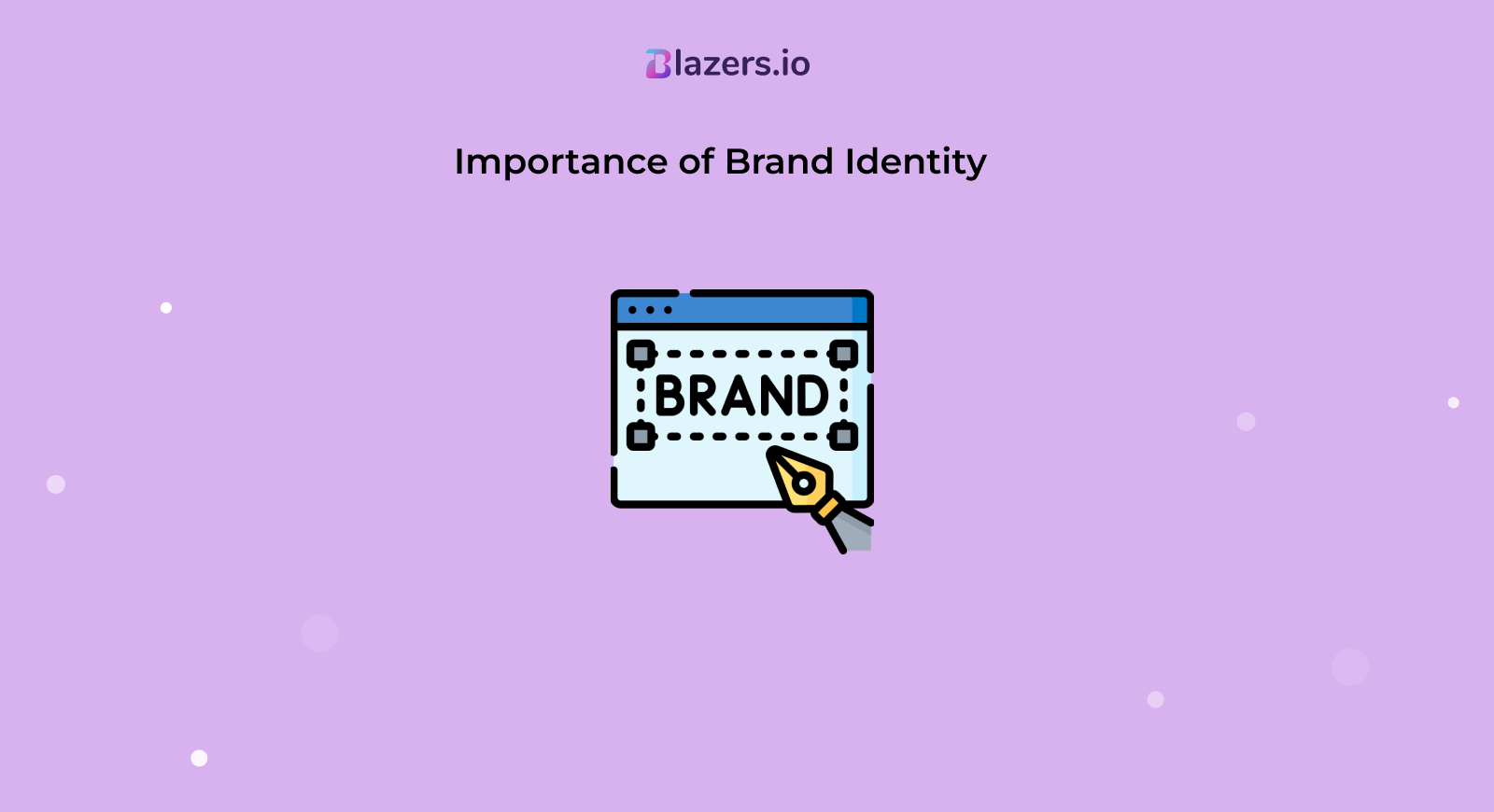Published at business by Sael

Importance of Brand Identity to Your Business
Published at business by Sael
Building a solid brand personality is crucial for businesses that want to grow and fight in today's challenging market. When a company knows its brand identity, it can stand out from its competitors, keep customers coming back, and build trust.
This blog talks about how important it is to create a unique brand identity. It uses Apple Inc. as a bright example of a well-known company that has done this.
Table of Contents
1. What is Brand Identity
2. What makes a Brand unique
2.1. Logo and Brand Image
2.2. The Values of a Brand
2.3. Voice and Message of the Brand
3. Why is Brand Identity important for your business
3.1. Make things stand out and get noticed
3.2. Building Trust and Loyalty
3.3. Customer Acquisition and making money
3.4. Obtaining Word-of-Mouth Advertising
4. Case Study: Apple
4.1. How has Apple's brand changed over time
4.2. Logo and Brand Image
4.3. The Values of the Brand
4.4. Voice and Message of the Brand
5. Ways to build a strong brand identity
5.1. Define your Target audience
5.2. Do Market Research
5.3. Develop Unique Value Proposition
5.4. Make brand elements look and sound in the same way
5.5. Genuine Communication
5.6. Provide Exceptional Customer Service
6. Things to think about and consider when making a brand identity
6.1. Staying Consistent
6.2. Keeping up with changing market trends
6.3. Managing Brand Reputation
6.4. Balancing new ideas with old ones
7. Conclusion
1. What is Brand Identity
Brand identity is the unique visual, vocal, and experience elements that make a business stand out. It includes the image, graphic style, speech, attitude, and brand message. When a brand has a strong brand identity, people are more likely to recognize it and feel more connected to it.

2. What makes a Brand unique
2.1 Logo and Visual Identity
People will recognize and remember a brand with a well-designed image and consistent visual elements like color schemes, fonts, and pictures. As obvious clues, they make people think and feel about the business.

2.2. The Values of a Brand
A brand's identity comprises all the human qualities, traits, and beliefs it represents. When there is an emotional link between the brand and the consumer, the consumer can relate to and identify with the brand better.

2.3. Voice and Message of the Brand
A brand's voice is its language, tone, and way of talking to people. Using the same message across multiple platforms strengthens the brand's identity, and a cohesive brand experience is made possible.

3. Why is Brand Identity important for your business
3.1. Make things stand out and get noticed
A strong brand name helps a company stand out from its competitors and be known. In a market full of choices, it makes the company stand out and makes it easier for people to learn and remember.

3.2. Building Trust and Loyalty
Customers are more likely to trust a company that has a clear identity. Customers believe and stay loyal to a brand when it always does what it says it will do, stays true to its ideals, and gives them unique experiences.

3.3. Customer Acquisition and making money
A good brand name makes a company more appealing to customers. Customers choose a brand with a strong and recognized identity, which increases sales and market share.
3.4. Obtaining Word-of-Mouth Advertising
A strong brand identity leads to brand champions and loyal customers who repeatedly talk about the company and buy from it. These brand champions become valuable tools that help the brand reach more people and have a more significant impact.
4. Case Study: Apple
4.1. How Apple's brand has changed over time
For Apple's brand value to grow, it shifted its focus from computers to a broader range of customer products and services. Because of this change, Apple improved its goods while staying true to its brand.
4.2. Logo and Brand Image
The well-known Apple mark, an apple with a hole in it, is easy to identify. The brand's goods and packages have a unique look because they are made with a simple design mindset.

4.3. The Values of the Brand
Apple is an excellent example of imagination, innovation, and technology that is easy to use. The brand's focus on beauty, simplicity, and pushing the edges of design has been well-received by customers worldwide.
4.4. Voice and Message of the Brand
Apple's ads and messages give off a sense of being independent, unique, and connected. In its marketing, the brand focuses on emotional stories that show how its goods change people's lives.
5. Ways to Build a Strong Brand Identity
Having a clear sense of your company identity helps you stand out from your competitors and build a loyal customer base.
5.1. Define your Target Audience
The important step to building a strong brand identity is figuring out your target audience. If you know your ideal customers, you can ensure that your brand message and other forms of communication fit with their wants, values, and tastes.
When making buyer profiles that reflect your target group, you should consider demographics, psychographics, and behavior patterns. This knowledge will help you figure out how to sell your business and build a brand that speaks to the right people.

5.2. Do Market Research
Market research is a great way to learn about customer behavior, market trends, and the scene of your competitors. Through polls, conversations, and data analysis, you can learn about what customers want, what hurts them, and how the industry works.
This study will help you determine where the market could be improved and place your brand as a source of solutions. By ensuring your brand personality matches what the market wants, you can build a strong and relevant picture in the minds of the people you want to buy from you.

5.3. Develop a Unique Value Proposition
A unique value proposition (UVP) is a short statement that tells clients about your brand's unique benefits and worth. It makes your business stand out from the competition and gives people a strong reason to choose your goods or services.
If you want to make a robust and unique value proposition (UVP), you need to know your brand's strengths, your client's needs, and how your products or services meet their needs or help them reach their goals. Your brand's identity will be based on a strong, unique selling proposition (USP), which will also guide your marketing messages.
5.4. Make brand elements look and sound in the same way
Building a good brand identity takes consistency. All links and interactions should use the same image, colors, fonts, motto, and brand style, among other things. These parts should make your target audience feel and think the way you want them to and match their tastes.
A uniform, familiar visible, and vocal character helps people remember the brand, builds trust, and gives the brand a strong position in the market.
5.5. Genuine Communication
In the consumer-focused world of today, it's essential to be honest. Customers like names that are truthful and easy to understand. Authentic communication means being honest, correct, and consistent in discussing your business.
Know your brand's ideals and goals and be true to them when you talk to your target market. Putting your brand's identity on the show and making your conversations more personal can build an emotional link with your customers. This will make them stay loyal and promote your brand.
5.6. Provide Exceptional Customer Service
Giving Customers Outstanding Experiences is a powerful way to build a strong business identity. Every time a customer interacts with your brand, it should be good.
Invest in customer service training, offer smooth, personalized experiences across many platforms, and listen to customer feedback if you want to keep getting better. You can be recognized for quality and loyal brand fans if you consistently exceed customers' expectations and give them value.

6. Things to think about and consider when making a brand identity
6.1. Staying Consistent
This is the main problem of building a brand identity. Customers will have the same experience with the brand no matter how often they connect with it. The company's spirit, looks, what it says, and customers' feelings about it must all stay the same. As a business grows and adds more outlets, like shops, websites, social media sites, and advertising efforts, consistency becomes more challenging.
Businesses must spend money on brand standards, style guides, and training courses to ensure employees and other partners know and follow the brand's fundamental values and identity. Regular brand checks and tracking also help to find any problems and take quick action to fix them.
6.2. Keeping up with changing market trends
This is another big problem when it comes to building a brand identity. Markets are changing, meaning consumer tastes and habits change over time. Brands must stay current and appeal to the people they're made for. This means you need to study your customers, keep an eye on market trends, and be open to new ideas.
Even though companies need to change, they must do so without giving up their core values. Finding the right mix between going with the flow and staying true to your brand. Before a business adds a trend to its marketing and communication strategy, it should consider how well it fits with the brand's identity and the needs of its target market.
6.3. Managing Brand Reputation
In the digital age, when information moves quickly through social media and the internet, keeping your reputation in good shape is more challenging than ever. A brand's image can be hurt soon by bad reviews, customer complaints, or public disputes.
Businesses must keep an eye on their online profile and quickly reply to negative comments. To handle a brand's image well, you must build trusted relationships with customers and other partners, give excellent customer service, and be open and straightforward. Also, brands need to have crisis management plans in place to deal with anything that might go wrong.

6.4. Balancing new ideas with old ones
This is a tricky topic to talk about when making a brand identity. Most of what businesses need to do to keep up with the competition and grow is to develop new ideas. However, they must also respect their past and the values that have made them great.
Too much innovation at the cost of a brand's essential character can turn off loyal customers and hurt the brand's value. Because of this, brands should carefully think about new ideas and innovations to make sure they fit with their core values.
Companies can add new ideas through joint partnerships, alliances, or limited-edition releases while still sticking to their core brand values. Brands can reach new groups and keep their loyal customers if they find a mix between new ideas and old ones.
7. Conclusion
In the end, building a solid brand identity requires facing several challenges and considering several factors. A big part of building a brand personality is ensuring that everything about the brand is consistent, responding to changing market trends, taking care of the brand's image, and finding a balance between new and old ideas.
By adequately handling these issues and concerns, businesses can build a strong brand identity that sticks with customers, encourages loyalty, and leads to long-term success in the market.





